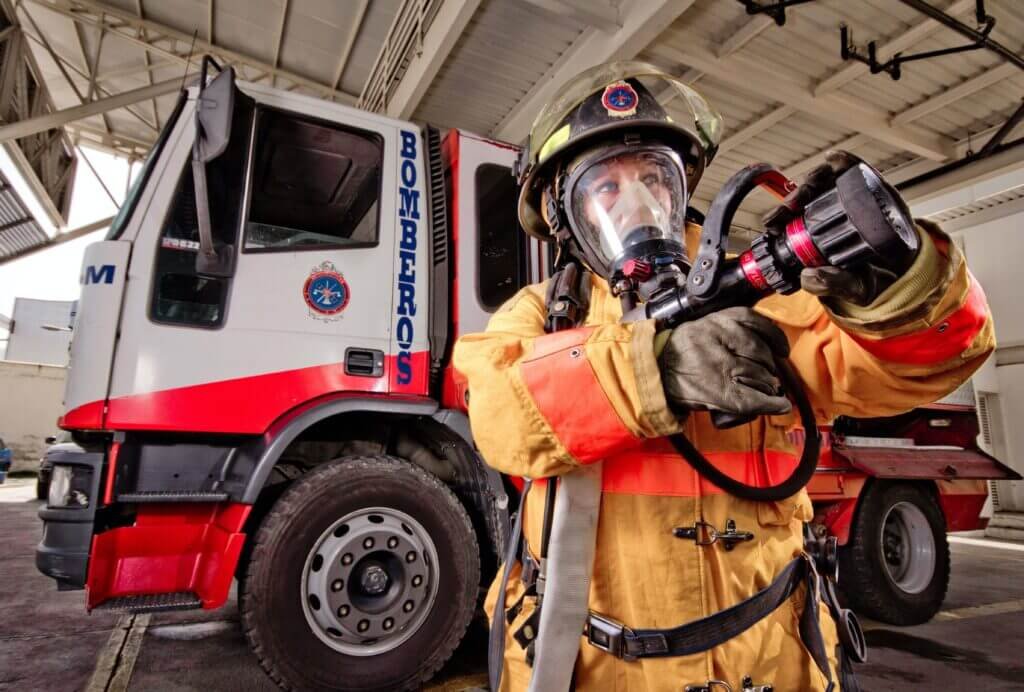Are you prepared for an emergency situation? In times of crisis, having a secure bug-out location can make all the difference. But how do you choose the right spot? It’s important to consider key factors such as accessibility, resources, and security. With the right bug-out location, you can have peace of mind knowing that you and your loved ones will have a safe haven during uncertain times. Let’s explore the key factors in selecting a bug-out location and ensure you’re ready for any eventuality.

Geographic Considerations
Climate
When choosing a bug-out location, one of the most important factors to consider is the climate. You need to find a location with a climate that will support your survival needs. Look for areas with mild temperatures, as extreme heat or cold can be detrimental to your well-being. Additionally, consider the amount of rainfall in the area, as a reliable water source is crucial for long-term survival.
Terrain
The terrain of your bug-out location plays a significant role in your ability to move around and establish a safe and secure base. Look for areas with diverse topography, such as hills, mountains, and forests, as these features provide natural barriers and can make your location more defensible. However, be cautious of areas prone to landslides or avalanches, as these can pose risks during natural disasters.
Water Availability
Water is essential for survival, so selecting a bug-out location near a reliable and abundant water source is paramount. Look for areas with rivers, lakes, or natural springs, as these sources can provide you with a steady supply of clean water. It’s also essential to ensure that the water source is accessible and not contaminated by pollutants or industrial activities.
Vegetation
The vegetation in your bug-out location can have a significant impact on your ability to sustain yourself in the long term. Look for areas with diverse plant life, as this indicates a healthy ecosystem that can support wildlife and provide you with edible plants and natural resources. Pay attention to the types of trees and plants in the area, as some species may be more useful than others for food, medicine, or building materials.
Infrastructure
Proximity to Cities
While the idea of getting away from populated areas may be appealing during an emergency, it’s crucial to choose a bug-out location that is within a reasonable distance from cities or towns. Being close to urban centers can provide you with access to essential services, such as hospitals, pharmacies, and stores. Additionally, being near a city can be advantageous for trade or gathering information during challenging times.
Access to Major Roads
When prepping for an emergency, easy access to major roads can be crucial for quickly evacuating or obtaining necessary supplies. Consider selecting a bug-out location that is within a reasonable distance from major highways or main roads. This way, you can easily reach other areas or receive assistance during an emergency.
Availability of Basic Services
During a crisis, basic services like electricity, water, and communication can become scarce or unreliable. Selecting a bug-out location that has access to these basic services can provide you with additional convenience and peace of mind. Areas with existing infrastructure may have a higher chance of having reliable utilities, which can be crucial for long-term survival.
Availability of Emergency Services
While self-sufficiency is a primary focus in a bug-out location, it’s still important to consider the availability of emergency services nearby. In case of a medical emergency, having access to hospitals or emergency medical services can be life-saving. Look for bug-out locations in proximity to emergency services to ensure you can get help when needed.

Security
Population Density
When choosing a bug-out location, it’s important to consider the population density of the area. Selecting a location with a low population density can help minimize the risk of encountering desperate or dangerous individuals during a crisis. Rural areas or places with a higher ratio of land to inhabitants are generally more secure and often offer more privacy.
Crime Rate
Another important security consideration is the crime rate in the area. Research the crime statistics of the potential bug-out location to ensure it is relatively safe and free from significant criminal activities. Areas with a low crime rate provide a higher level of personal safety, allowing you to focus on survival and other essential tasks.
Defensibility
Ensuring the defensibility of your bug-out location is crucial for long-term survival. Look for locations that offer natural advantages for defense, such as high ground, limited access points, or natural barriers like cliffs or rivers. Consider the layout and terrain of the area to determine how easily it can be secured and defended against potential threats.
Potential Threats
When selecting a bug-out location, it’s vital to assess the potential threats specific to the region. Consider natural disasters that are common in the area, such as hurricanes, earthquakes, or wildfires. Additionally, research any geopolitical or social tensions that may pose a threat to your safety and ability to survive. Being aware of potential threats allows you to prepare adequately and mitigate risks.
Resources
Access to Food
Being able to sustain yourself with food is essential during an emergency. Look for bug-out locations with access to fertile land for farming or areas with abundant wildlife for hunting. Additionally, consider the availability of fishing opportunities or edible plants in the surrounding environment. A bug-out location with access to a variety of food sources increases your chances of long-term sustainability.
Availability of Wildlife
Having access to wildlife can be a valuable resource in a bug-out location. Wildlife provides a source of food, fur, and other essential materials. Choose a location with a diverse range of wildlife, ensuring that there are sufficient populations to support hunting and gathering activities. However, be mindful of any legal or conservation restrictions in the area.
Water Sources
Without access to clean and abundant water sources, survival becomes challenging. Ensure that your bug-out location is situated near reliable water sources such as rivers, lakes, or underground aquifers. Consider the quality of the water and the accessibility of the sources to ensure that you can meet your hydration needs in the long term.
Natural Resources
Selecting a bug-out location with access to natural resources can greatly enhance your chances of long-term survival. Look for areas rich in timber, minerals, or other valuable resources that can be utilized for building, trade, or fuel purposes. Having these resources readily available can reduce the need to venture out in search of essential supplies during a crisis.

Community
Friendly Population
A friendly and cohesive population can provide a strong support network in times of crisis. Seek out bug-out locations with a welcoming and tight-knit community that shares your values and preparedness mindset. Friendly neighbors can offer assistance, information, and even form cooperative networks for mutual protection and resource sharing.
Supportive Community
A supportive community is essential for long-term survival and well-being. Look for bug-out locations where residents are accustomed to self-sufficiency, sustainable living, or prepping activities. These like-minded individuals can provide valuable knowledge, skills, and resources, fostering a supportive environment that enhances your chances of survival.
Shared Skills and Resources
A bug-out location with a community that possesses a wide range of skills and resources is highly desirable. Seek out areas where residents have diverse expertise in areas such as agriculture, construction, medicine, or defense. A community with shared skills and resources can collaborate effectively to overcome challenges and promote self-sufficiency.
Cultural Fit
Considering the cultural fit of your bug-out location is important in creating a sense of belonging and enhancing your overall well-being. Immersing yourself in a community that shares your values, traditions, and cultural background can help foster a sense of connection and reduce potential conflicts or alienation during times of crisis.
Sustainability
Agricultural Potential
A sustainable bug-out location should offer fertile soil and favorable conditions for agricultural activities. Look for areas with sufficient rainfall, moderate temperatures, and adequate access to sunlight. Consider the type of crops that can thrive in the region and evaluate the feasibility of establishing gardens or small-scale farming operations.
Renewable Energy Sources
Maximizing renewable energy sources in your bug-out location is an essential aspect of long-term sustainability. Evaluate the potential for solar, wind, or hydroelectric energy generation in the area. Having access to clean and reliable energy sources reduces dependence on traditional power grids and increases self-sufficiency.
Waste Management
An often overlooked aspect of sustainability is waste management. Choose a bug-out location that enables you to dispose of waste properly and minimize the impact on the environment. Consider recycling facilities, composting options, and regulations on waste disposal in the area. Implementing sustainable waste management practices can contribute to a healthier, more self-sufficient living environment.
Self-sufficiency
Self-sufficiency is a key factor in the long-term sustainability of a bug-out location. Look for areas that provide opportunities for growing food, harvesting natural resources, and generating energy. Establishing self-sufficient systems, such as rainwater collection, off-grid power generation, and permaculture design, can significantly enhance your ability to thrive independently in challenging circumstances.
Proximity to Threats
Distance from Population Centers
In times of crisis, being located far from heavily populated areas can be advantageous. Selecting a bug-out location that is at a safe distance from major cities or densely populated areas reduces the risk of encountering large crowds, potential disease outbreaks, or civil unrest. Aim for a balance between being far enough to avoid threats while still having access to essential services when needed.
Proximity to Natural Disasters
While it’s impossible to completely avoid natural disasters, selecting a bug-out location that is relatively safe from common disasters is important. Consider the local geography, history of natural disasters, and potential risks such as hurricanes, floods, earthquakes, or wildfires. Avoid areas prone to severe or frequent disasters to minimize the risk to you and your family.
Nearness to High-risk Areas
When choosing a bug-out location, it’s crucial to consider the proximity to high-risk areas that could pose potential threats to your safety. Evaluate the location for any nearby hazardous facilities, military bases, or areas susceptible to civil unrest. Being vigilant and aware of potential high-risk zones enables you to make informed decisions and take necessary precautions to protect yourself.
Accessibility to Limited Resources
In the event of a crisis, accessing necessary resources may become challenging. Consider the bug-out location’s proximity to essential resources such as fuel, medical supplies, or construction materials. Being within a reasonable distance from these limited resources can enhance your ability to sustain yourself and adapt to changing circumstances.
Legal Considerations
Land Ownership
Ensure that the bug-out location you choose allows for legal land ownership or long-term tenure. Research the land ownership laws and regulations in the area to avoid any potential conflicts or challenges. Understanding and following local land ownership rules will protect your investment and ensure your ability to use the land effectively.
Property Zoning
Check the property zoning regulations in the desired bug-out location. Zoning laws determine how you can use the land and may restrict certain activities, such as farming, building structures, or setting up off-grid systems. Understanding the zoning regulations allows you to plan your bug-out location and envision how you can utilize the property within legal boundaries.
Permission and Permits
Certain bug-out location activities may require permission or specific permits from local authorities. Determine if there are any restrictions or permits necessary for activities such as hunting, farming, or constructing structures. Adhering to local regulations ensures that you can legally engage in necessary activities and minimize potential conflicts with authorities.
Local Laws and Regulations
Familiarize yourself with local laws and regulations before settling on a bug-out location. This includes understanding property rights, self-defense laws, building codes, and any other policies that apply. Complying with local laws not only keeps you in good standing with the community but also ensures your own safety and security.
Healthcare Facilities
Availability of Medical Care
Access to medical care is crucial, especially during emergencies or if you have pre-existing medical conditions. Select a bug-out location that is within a reasonable distance from hospitals, clinics, or healthcare centers. Consider the quality of medical care in the area and the availability of specialists or essential medical equipment.
Access to Emergency Services
During a crisis, immediate access to emergency services can be lifesaving. Evaluate the proximity of your bug-out location to fire stations, police stations, or other emergency services. Being within a reasonable distance from emergency services ensures that you can quickly receive help in critical situations.
Infrastructure for Healthcare
In addition to healthcare facilities, consider the overall infrastructure for healthcare in your bug-out location. Assess the availability of clean water, reliable electricity, and transportation networks that allow for the smooth operation of medical services. The presence of well-maintained healthcare infrastructure enhances your chances of receiving timely and effective medical care when needed.
Proximity to Pharmacies
Having access to pharmacies or drugstores is important for obtaining necessary medication and medical supplies. Select a bug-out location that is within a reasonable distance from pharmacies or has a reliable method of medication distribution. Ensure that the pharmacies stock a wide range of medications to meet your specific needs in case of emergencies.
Conclusion
Selecting the right bug-out location is a critical decision that can significantly impact your chances of survival during a crisis. By considering factors such as climate, terrain, security, resources, community, sustainability, proximity to threats, legal considerations, and healthcare facilities, you can make an informed choice that meets your specific needs and enhances your chances of long-term survival. Remember to thoroughly research and evaluate potential bug-out locations before making a final decision, as careful consideration of all these factors is paramount to your safety and well-being.


